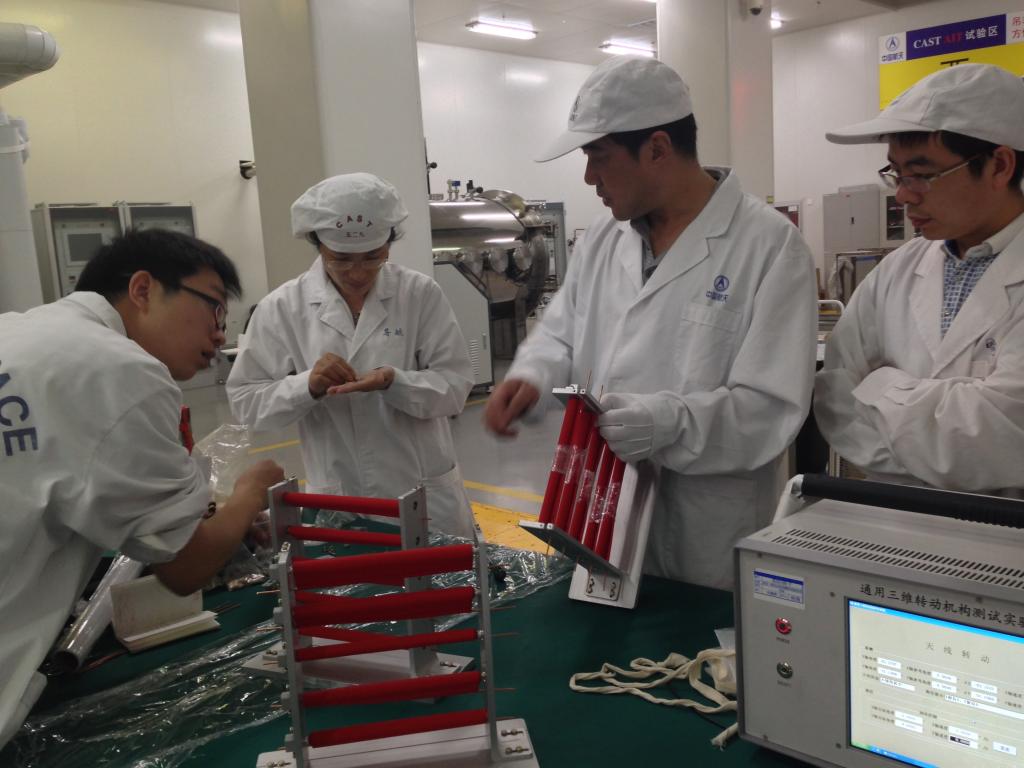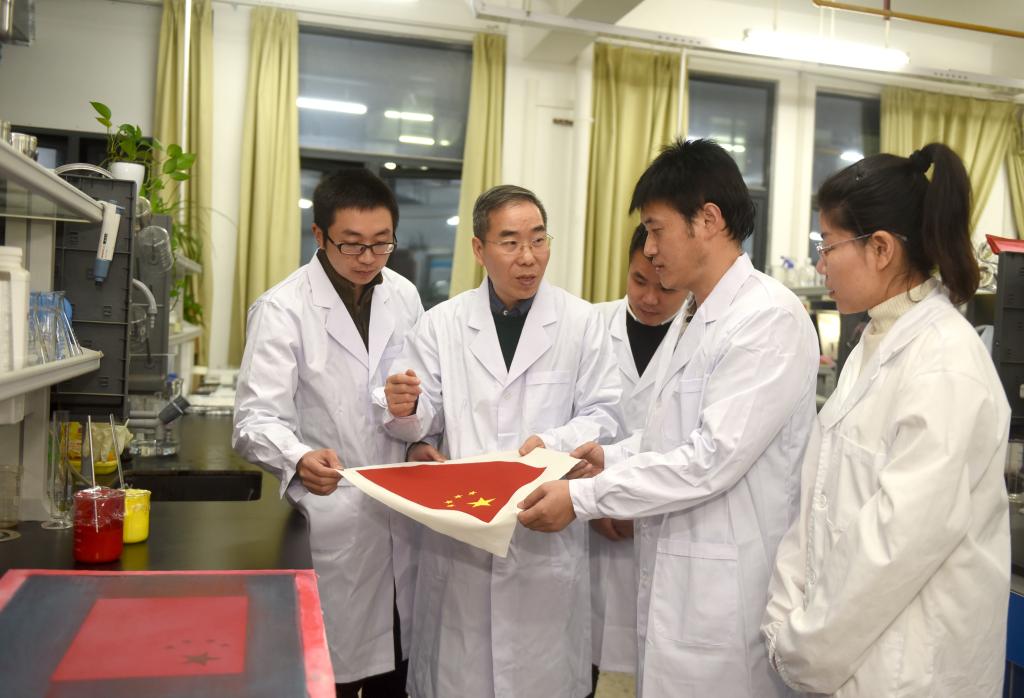Almost all of us have had a flag raising experience. Hold it, then raise it. It's so easy.
But doing so on the moon can be exceptionally difficult.
As the Chinese moon probe Chang'e-5 raised the national flag on the moon, let's check out the effort engineers put into this significant achievement.
How to make it fly?
The moon is so small compared to the Earth that it cannot maintain an atmosphere, which leads to the first problem for flag raising – there's no wind to keep the flag expanded.
You may have seen images of the U.S. flag apparently flying during the Apollo missions. That's just an illusion. The fact is, in addition to the vertical pole where the flag is attached to, there's also a horizontal pole to make it stay horizontal.
The Chinese design of the flag pole is a bit different.
In the previous Chang'e missions, the national flag was painted on the surface of the moon landers and rovers. But in the Chang'e-5 mission, the flag was rolled up before being expanded.

Engineers test the rolling mechanism at the China Academy of Space Technology (CAST). /Wuhan Textile University
Engineers test the rolling mechanism at the China Academy of Space Technology (CAST). /Wuhan Textile University
Also, as a Chinese astronaut has yet to land on the moon, the work has to be done by machines – a robotic arm, to be specific.
According to a report from China National Radio, the whole flag raising system must weigh less than 1 kg in order to keep the whole lander lightweight. Yet the robot arm must be able to endure sudden temperature changes during the launch, the radiation from the sun and the air-less environment on the moon.
The engineers tried many mechanisms to display the flag, including memory metal and unfolding the flag like a traditional Chinese fan. Eventually the rolling-out solution worked best in simulations.
Finding the right material for flag
Normal flags on Earth will be bleached or even destroyed on the moon because of the radiation from the sun. Many speculated that this may have happened to some of the six Apollo flags, though there have been no observations to prove that yet.
"Strong fabrics are usually hard to dye, while easy-to-dye fabrics are usually fragile," said Cheng Chang, who is in charge of the flag-raising system of the Chang'e-5. "It took our team more than a year to find the perfect material."
The researchers revealed how they came up with the right fabric for the flag.
The team works for the Wuhan Textile University, and is led by professor Xu Weilin.

Xu (L2) talks with his team members about the fabric technology. /Wuhan Textile University
Xu (L2) talks with his team members about the fabric technology. /Wuhan Textile University
"The flag was mainly made of high-end aramid fibers with our own technology," the university wrote on its website. "It can endure extreme ultraviolet radiation."
The team also used their own nanomaterial to prevent the color from vaporizing.
"It's a highly customized product for the space mission," China Space News reported.
While the Chinese-language internet is amazed at how adorable the pop-up flag is, we should also know and remember the teams behind this complicated effort.

